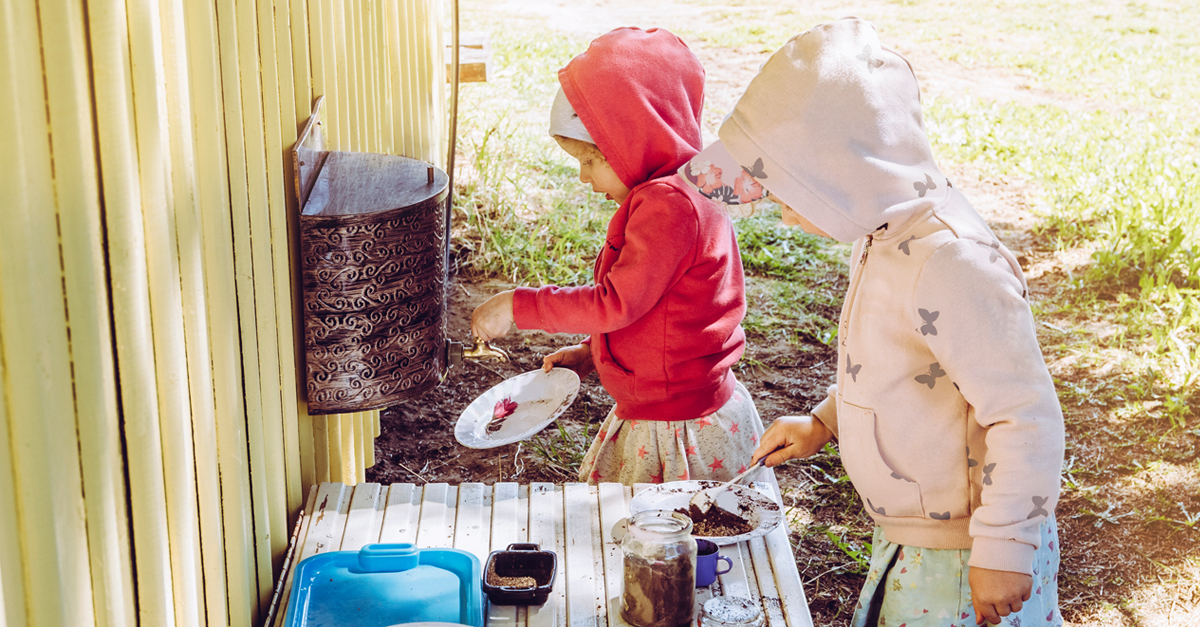Mud and Math Activities for Young Learners

Messy learning can be fun AND educational; try these mud math activities with your children. Control the mess by selecting an outside area that can easily be hosed down, put on old clothes, and you are ready to create your own Messy Mud Pie Café!
Messy Mud Pie Café
Materials
- Dirt
- Large basin of water
- Measuring tools – teaspoons, tablespoons, measuring cups, liquid measures, kitchen scale, bathroom scale
- Old pie pans, muffin tins, or small flat containers
- Rolling pin (optional)
- Natural “decorations”, such as flowers or twigs (optional)
Instructions
To create your mud pies, combine approximately 75% mud and 25% sand in a large container. Slowly add the water until it is moist and moldable. Use the rolling pin or just your hands to roll out the mud into pies. Form the “pies” in a muffin tin, old pie pans, or small flat containers. Decorate them with items from your backyard such as flowers, twigs, pine cones, or stones. Put them in the sun to “bake.”
Talk about the time it will take for the mud pie to “bake” (or dry out). (Parents, you might consider creating your own mud pie ahead of time and letting it dry to show an example of a baked pie.) Record the guesses. Then check back in at regular intervals, such as 30 minutes, 1 hour, and half a day. Take a picture at different intervals to record how the mud pies are baking.
While the pies are “baking”, consider the following activities:
Extra Mud and Math Activities
1) Measuring Mud
Use the remaining mud to explore different weights and measures. Have your child measure specific amounts of mud. For example, ask your child to measure 1/4 cup of mud and place it in a container. Help your child fully fill the measuring cup and level it to obtain the exact measurement. Then ask your child, “Can you measure ¾ cup of mud?” Place the two containers next to each other and compare the amounts of mud. Which container of mud is more? Which is less?
2) Weighing Mud
Next, try weighing some mud. First have your child estimate the weight of a particular amount of mud. Then use a scale to weigh the mud. Was your child correct? Next select two different amounts of mud and estimate their weight based on your first measurement; then find the actual weights. Was your estimate more or less than the actual amount?
3) Measuring Water
Use the remaining water to find volume with different-sized containers. Pour the water into the containers and estimate which container holds more water. Next pour each container into the liquid measure. Was your estimate correct?
Be sure to allow lots of time for free play in addition to your educational time with your child. Enjoy the messy fun together!
We Are Here to Help
If you have questions about teaching math, we are here to help!
Get in Touch